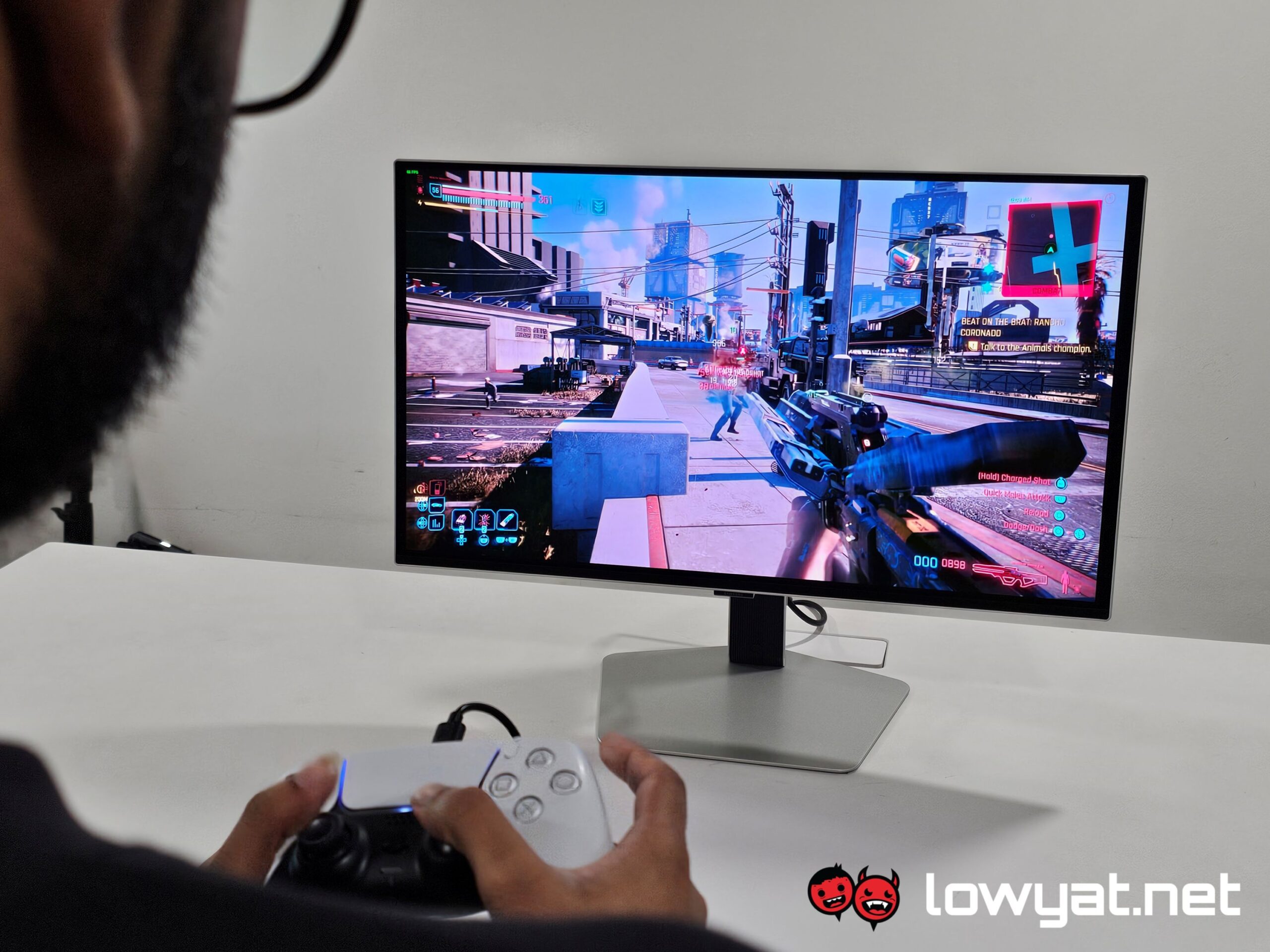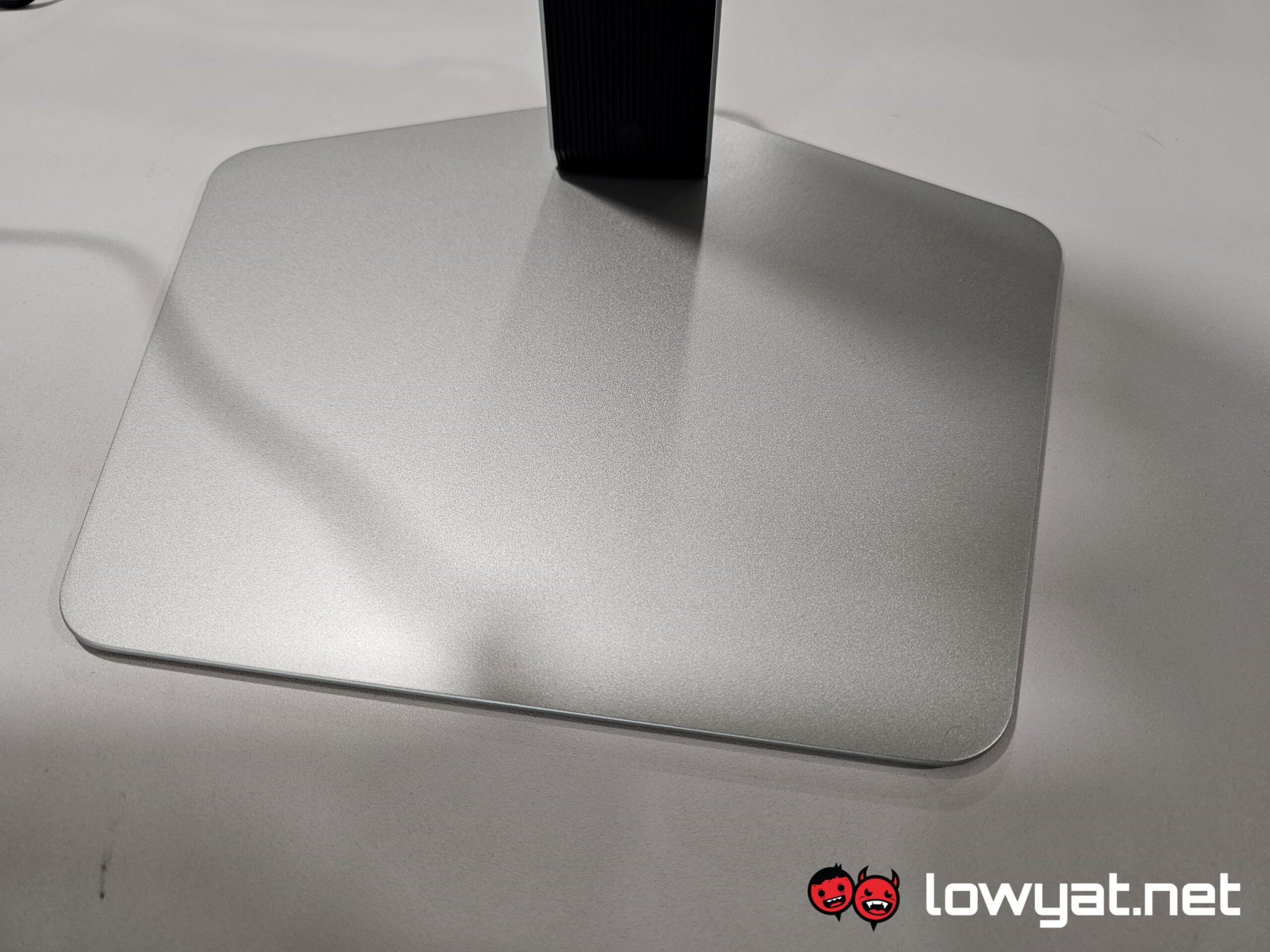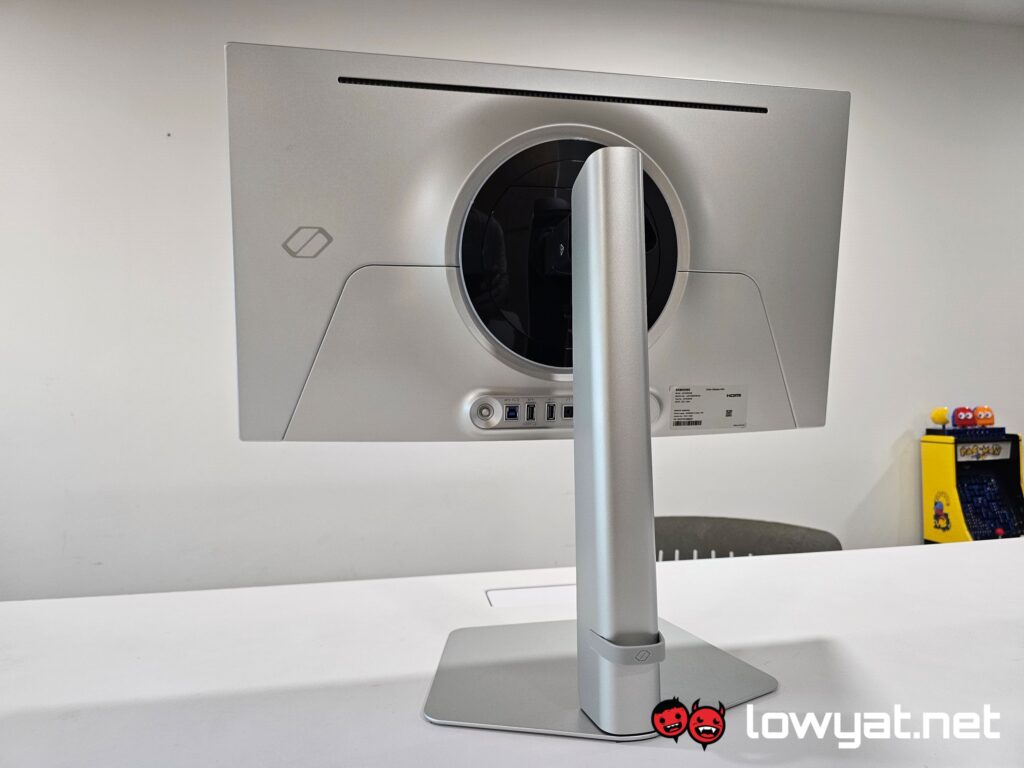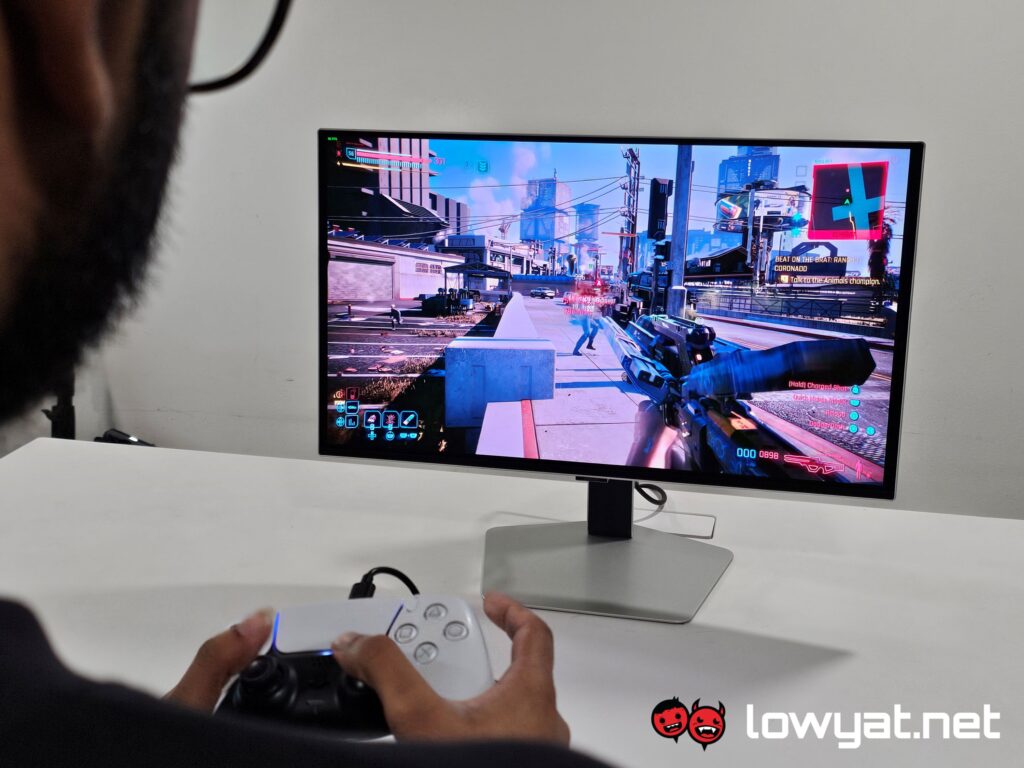The Samsung Odyssey OLED G6 G60SD is another option, thrown into a proverbial pool of OLED gaming monitors, with the promise of greater visuals, punchier colours. The lot. More than that, it offers a level of simplicity that I think brands would stand to gain, provided they follow the formula.
What Am I Looking At?
Specs-wise, the OLED G6 ships out with a 27-inch panel that, if its name wasn’t obvious enough, is OLED. It’s a 16:9 aspect ratio display but the fact that this has a maximum refresh rate of 360Hz and a GTG response time of 0.03ms is downright impressive.
Perhaps this is just a personal preference but the OLED G6 also comes in one resolution and it’s my favourite of the lot: QHD or 2,560 x 1,440 pixels. At 27-inches, the OLED G6’s monitor size is an industry standard, fitting on virtually every desk out there while still big and wide enough to see your work without squinting. Oh, and it’s also HDR10 rated, and HDR10+ for gaming.
Ports-wise, you get one DisplayPort 1.4 port, 2 HDMI 2.1 ports, two USB 3.0 ports, and a 3.5mm headphone jack. All of which are exceedingly easy to access. There’s a nipple-style joystick at the back as well, though it is located in the middle and at the back of the monitor. On that note, the monitor’s built-in menu and controls are as plain as it gets, being self-explanatory.
The construction of the OLED G6 is fuss-free, with a large flat base to prop it up, while the built-in LED strip around the core of the spine glows all the colours of the rainbow or stays static. Your choice, honestly.
What’s Good About It?
At its bare minimum, the words on the OLED G6 are sharp and readable and don’t suffer from that fuzziness that is usually prevalent with the majority of OLED and curved OLED displays.
Remember when I said that getting to the ports are exceedingly easy? That wasn’t an exaggeration. I have to give Samsung credit for this because, unlike other gaming monitor makers, the company lined the ports up simply behind the monitor, flush to the back. This means you don’t have to be a contortionist to plug in a DisplayPort or HDMI cable, you literally just have to feel or, if you’re lacking that little bit of self-confidence, do a bit of speaking. And you’ll actually see the ports, barenaked for all to see.
On a side note, the wide and flat base is a plus point in my books, mainly because it serves a secondary function of being a place where I can stash my knick-knacks on. I truly and honestly do not like the three-prong designs that most other brands use (I’m looking at you, ASUS), as they unnecessarily take up space.
At QHD resolution, the OLED G6 is a sweet spot that I myself advocate for some rather clear cut reasons: it’s sharper than Full HD and honestly not as resource-heavy or taxing on a GPU as 4K. Sure, gaming at the latter resolution is prettier but for me, it’s a luxury I reserve for home theatre, not gaming.
Of course, I can’t talk about the monitor without going a little in-depth about the OLED panel, which looks great. Before you even turn on or activate HDR, the panel already produces eye-watering colours and contrasts. A natural trait of most OLEDs, blacks are inky, whites are what I describe as “flashbang level” bright, while the colour palette pops right out, sometimes in levels of saturations that do not necessarily exists in real life.
Burn-in of the panel isn’t entirely too much of an issue, on account that the OLED G6 automatically dims itself when it detects no activity from the user after a couple of minutes.
What’s The Catch?
The OLED panel of the OLED G6 is really, really bright and the colour palette looks extremely saturated. That’s isn’t necessarily a black mark on its report card but using the monitor over long periods can cause some level of disorientation when you start using other monitors with less punchy panels and colour accuracy. Honestly, I’ve tested many OLED monitors but none of them stand out in my face as much as this one.
One gripe that I have with the OLED G6 is that, unlike its bigger 32-inch Odyssey sibling, the G8, the monitor only supports AMD Freesync Premium Pro and isn’t an NVIDIA G-Sync Compatible monitor. It’s not a dealbreaker but and Freesync Premium Pro works fine but it would be nice if Samsung extended that courtesy to this monitor.
Another pain point that I have – although at this point, it feels like I’m nitpicking – is the absurdly high 360Hz refresh rate. I am absolutely sure that the facility would benefit someone in the Esports community but for a general gamer like me who plays AAA games here and there, anything beyond 144Hz feels wasted on me.
There’s also the price of it. Off the shelf, the OLED G6 retails for RM4,999. It’s not the most expensive price tag for a gaming monitor of this size but at the time of this publication, there are other OLED gaming monitors that retail at considerably cheaper prices, and at larger display sizes too.
Should I Buy It?
The Samsung Odyssey OLED G6 ticks all the boxes in my checklist. It’s a comfortable, standard even, 27-inch OLED display, with a maximum resolution of 1440p, has a higher-than-average refresh rate, and while I’m still not entirely sold on it, support for HDR10 is certainly a plus point.
Despite the caveats mentioned in the previous section, save for the asking price, I don’t think they’d be enough to dissuade you from considering the OLED G6. That being said, I would be remiss if I didn’t remind you that there are alternatives you can consider but if you’re a fan of Samsung’s display technology and you’re not interested in its 32-inch model, by all means.
Photography by John Law.
Follow us on Instagram, Facebook, Twitter or Telegram for more updates and breaking news.




















